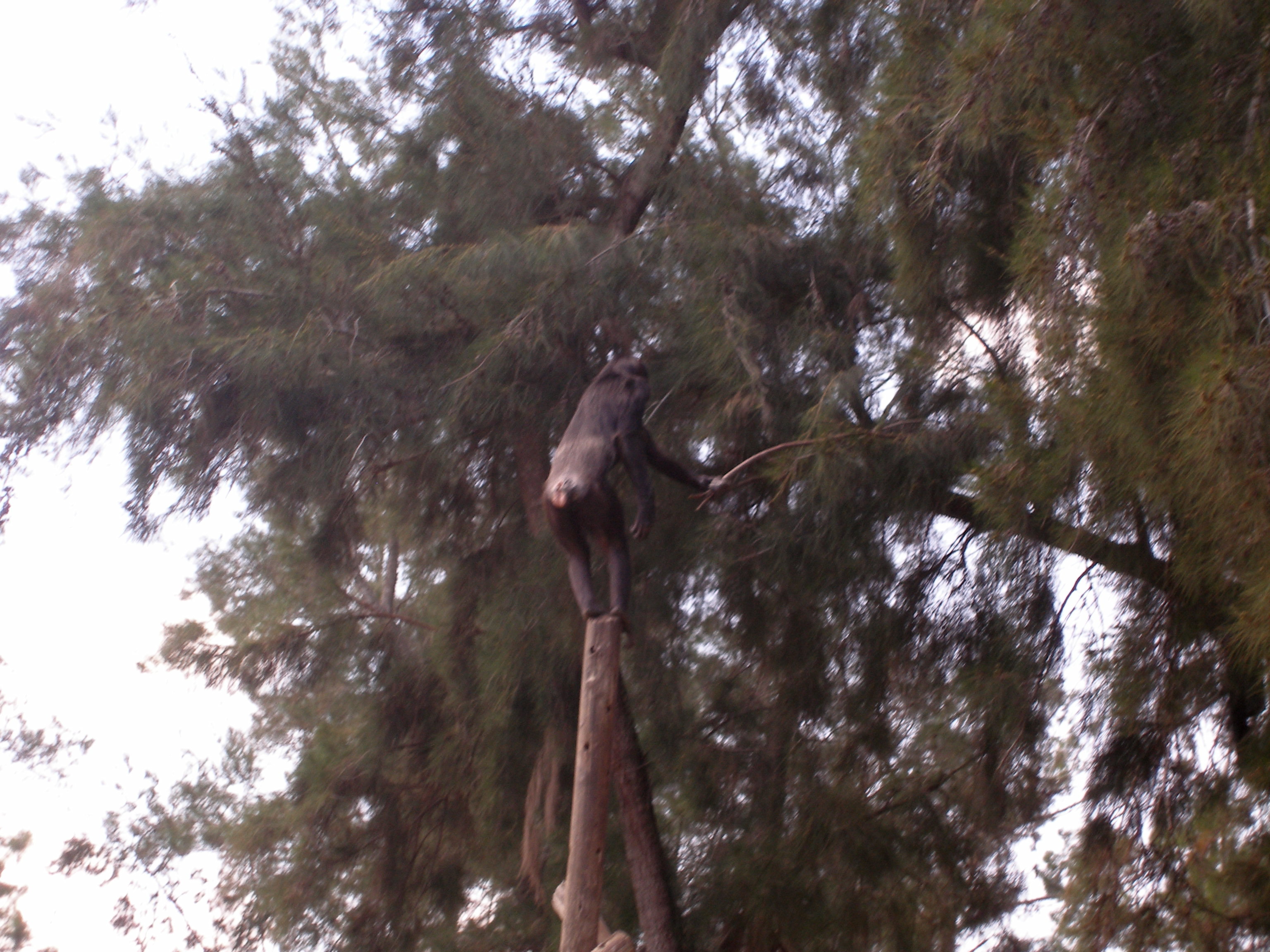|
Wide-area Persistent Surveillance
Wide-area motion imagery (WAMI) is an approach to surveillance, reconnaissance, and intelligence-gathering that employs specialized software and a powerful camera system—usually airborne, and for extended periods of time—to detect and track hundreds of people and vehicles moving out in the open, over a city-sized area, kilometers in diameter. For this reason, WAMI is sometimes referred to as wide-area persistent surveillance (WAPS) or wide-area airborne surveillance (WAAS). A WAMI sensor images the entirety of its coverage area in real time. It also records and archives that imagery in a database for real-time and forensic analysis. WAMI operators can use this live and recorded imagery to spot activity otherwise missed by standard video cameras with narrower fields of view, analyze these activities in context, distinguish threats from normal patterns of behavior, and perform the work of a larger force. Military and security personnel are the typical users of WAMI, employing th ... [...More Info...] [...Related Items...] OR: [Wikipedia] [Google] [Baidu] |
Surveillance
Surveillance is the monitoring of behavior, many activities, or information for the purpose of information gathering, influencing, managing or directing. This can include observation from a distance by means of electronic equipment, such as closed-circuit television (CCTV), or interception of electronically transmitted information like Internet traffic. It can also include simple technical methods, such as Human intelligence (intelligence gathering), human intelligence gathering and postal interception. Surveillance is used by citizens for protecting their neighborhoods. And by governments for intelligence gathering - including espionage, prevention of crime, the protection of a process, person, group or object, or the investigation of crime. It is also used by criminal organizations to plan and commit crimes, and by businesses to Industrial espionage, gather intelligence on criminals, their competitors, suppliers or customers. Religious organisations charged with detecting he ... [...More Info...] [...Related Items...] OR: [Wikipedia] [Google] [Baidu] |
Aerostat
An aerostat (, via French) is a lighter-than-air aircraft that gains its lift through the use of a buoyant gas. Aerostats include unpowered balloons and powered airships. A balloon may be free-flying or tethered. The average density of the craft is lower than the density of atmospheric air, because its main component is one or more gasbags, a lightweight skin containing a lifting gas (which could be heated air or any gas of lower density than air) to provide buoyancy, to which other components such as a gondola containing equipment or people are attached. Especially with airships, the gasbags are often protected by an outer envelope. Aerostats are so named because they use aerostatic lift which is a buoyant force that does not require movement through the surrounding air mass, resulting in VTOL ability. This contrasts with the heavy aerodynes that primarily use aerodynamic lift which requires the movement of a wing surface through the surrounding air mass. The term has also be ... [...More Info...] [...Related Items...] OR: [Wikipedia] [Google] [Baidu] |
Intelligence Gathering Disciplines
Intelligence has been defined in many ways: the capacity for abstraction, logic, understanding, self-awareness, learning, emotional knowledge, reasoning, planning, creativity, critical thinking, and problem-solving. More generally, it can be described as the ability to perceive or infer information, and to retain it as knowledge to be applied towards adaptive behaviors within an environment or context. Intelligence is most often studied in humans but has also been observed in both non-human animals and in plants despite controversy as to whether some of these forms of life exhibit intelligence. Intelligence in computers or other machines is called artificial intelligence. Etymology The word ''intelligence'' derives from the Latin nouns '' intelligentia'' or '' intellēctus'', which in turn stem from the verb '' intelligere'', to comprehend or perceive. In the Middle Ages, the word ''intellectus'' became the scholarly technical term for understanding, and a translation for th ... [...More Info...] [...Related Items...] OR: [Wikipedia] [Google] [Baidu] |
Reconnaissance
In military operations, reconnaissance or scouting is the exploration of an area by military forces to obtain information about enemy forces, terrain, and other activities. Examples of reconnaissance include patrolling by troops (skirmishers, long-range reconnaissance patrol, U.S. Army Rangers, cavalry scouts, or military intelligence specialists), ships or submarines, crewed or uncrewed reconnaissance aircraft, satellites, or by setting up observation posts. Espionage is usually considered to be different from reconnaissance, as it is performed by non-uniformed personnel operating behind enemy lines. Often called recce (British, Canadian and Australian English) or recon (American English), the word for this activity has at its root the associated verb ''reconnoitre'' or ''reconnoiter''. Etymology The word from the Middle French ''reconoissance''. Overview Reconnaissance conducted by ground forces includes special reconnaissance, armored reconnaissance, amp ... [...More Info...] [...Related Items...] OR: [Wikipedia] [Google] [Baidu] |
Surveillance
Surveillance is the monitoring of behavior, many activities, or information for the purpose of information gathering, influencing, managing or directing. This can include observation from a distance by means of electronic equipment, such as closed-circuit television (CCTV), or interception of electronically transmitted information like Internet traffic. It can also include simple technical methods, such as Human intelligence (intelligence gathering), human intelligence gathering and postal interception. Surveillance is used by citizens for protecting their neighborhoods. And by governments for intelligence gathering - including espionage, prevention of crime, the protection of a process, person, group or object, or the investigation of crime. It is also used by criminal organizations to plan and commit crimes, and by businesses to Industrial espionage, gather intelligence on criminals, their competitors, suppliers or customers. Religious organisations charged with detecting he ... [...More Info...] [...Related Items...] OR: [Wikipedia] [Google] [Baidu] |
Gorgon Stare
Gorgon Stare is a video capture technology developed by the United States military. It is a spherical array of nine cameras attached to an aerial drone. The US Air Force calls it "wide-area surveillance sensor system".Air Force Magazine.com: ''The New Normal for RPAs'', by Marc V. Schanz, Senior Editor , November 2011, Vol. 94, No. 11, page53. Background The system is capable of capturing motion imagery of an entire city, which can then be analyzed by people or an , such as the |
ARGUS-IS
The ARGUS-IS, or the Autonomous Real-Time Ground Ubiquitous Surveillance Imaging System, is a Defense Advanced Research Projects Agency (DARPA) project contracted to BAE Systems. ARGUS is an advanced camera system that uses hundreds of cellphone cameras in a mosaic to video- and auto-track every moving object within a 15 square mile area. ARGUS is a form of wide-area persistent surveillance system that allows for one camera to provide such detailed video that users can collect "pattern-of-life" data and track individual people inside the footage anywhere within the field of regard. It uses air assets (manned aircraft, drones, blimps, aerostats) to persistently loiter and record video of a 36 square mile area with enough detail to track individual pedestrians, vehicles or other objects of interest as long as the air asset remains circling above. Automatic object-tracking software called Persistics from the Lawrence Livermore labs allows users to auto-track every moving object ... [...More Info...] [...Related Items...] OR: [Wikipedia] [Google] [Baidu] |
Kestrel (surveillance System)
Kestrel is a wide-area motion imagery (or persistent surveillance) system used on aerostats at U.S. forward operating bases in Afghanistan to monitor the surrounding areas. Developed by Logos Technologies, the system is equipped with electro-optical and infrared cameras, providing day/night force protection and overwatch to troops. Development Kestrel has its roots in Constant Hawk, a wide-area sensor suite developed by Logos Technologies as well, in 2006, for use on crewed U.S. Army aircraft. In late 2010, the ISR Task Force and Army requested a version of Constant Hawk for aerostats. Contracted through the U.S. Naval Air Systems Command, the Kestrel program delivered four units the following year. However, these first four Kestrels lacked an infrared capability, and by June 2012, were replaced by 10 day/night systems and six spares. In 2017, Logos Technologies unveiled its even lighter Kestrel Block II wide-area motion imagery system at thInternational Defence Exhibition ... [...More Info...] [...Related Items...] OR: [Wikipedia] [Google] [Baidu] |
Constant Hawk
Constant Hawk is a United States Army wide-area motion imagery system flown on manned reconnaissance aircraft in Iraq and Afghanistan. Constant Hawk was the first airborne Wide Area Persistent Sensor developed and deployed by the United States. It flew over 66 thousand flight hours in Iraq on five aircraft and is directly and indirectly credited with producing the intelligence data that dramatically reduced IED production and deployment. Like similar wide-area surveillance systems, such as Gorgon Stare, ARGUS-IS or the aerostat-mounted Kestrel, Constant Hawk was designed to give operators a fuller view of an area (such as a battlefield or operating base) than they would normally get from standard full-motion video cameras. The Army first deployed Constant Hawk in 2006 as part of a Quick Reaction Capability to help combat enemy ambushes and improvised explosive devices (IEDs) in Afghanistan and Iraq. Constant Hawk flew on Short 360-300s in Iraq under the command of Task ... [...More Info...] [...Related Items...] OR: [Wikipedia] [Google] [Baidu] |
Reconnaissance
In military operations, reconnaissance or scouting is the exploration of an area by military forces to obtain information about enemy forces, terrain, and other activities. Examples of reconnaissance include patrolling by troops (skirmishers, long-range reconnaissance patrol, U.S. Army Rangers, cavalry scouts, or military intelligence specialists), ships or submarines, crewed or uncrewed reconnaissance aircraft, satellites, or by setting up observation posts. Espionage is usually considered to be different from reconnaissance, as it is performed by non-uniformed personnel operating behind enemy lines. Often called recce (British, Canadian and Australian English) or recon (American English), the word for this activity has at its root the associated verb ''reconnoitre'' or ''reconnoiter''. Etymology The word from the Middle French ''reconoissance''. Overview Reconnaissance conducted by ground forces includes special reconnaissance, armored reconnaissance, amp ... [...More Info...] [...Related Items...] OR: [Wikipedia] [Google] [Baidu] |
Lawrence Livermore National Laboratory
Lawrence Livermore National Laboratory (LLNL) is a federal research facility in Livermore, California, United States. The lab was originally established as the University of California Radiation Laboratory, Livermore Branch in 1952 in response to the detonation of the first atomic bomb by the Soviet Union during the Cold War. It later became autonomous in 1971 and was designated a national laboratory in 1981. A federally funded research and development center, Lawrence Livermore Lab is primarily funded by the U.S. Department of Energy and it is managed privately and operated by Lawrence Livermore National Security, LLC (a partnership of the University of California), Bechtel, BWX Technologies, AECOM, and Battelle Memorial Institute in affiliation with the Texas A&M University System. In 2012, the laboratory had the synthetic chemical element livermorium (element 116) named after it. Overview LLNL is self-described as a "premier research and development institution for sci ... [...More Info...] [...Related Items...] OR: [Wikipedia] [Google] [Baidu] |




_(349115665).jpg)

